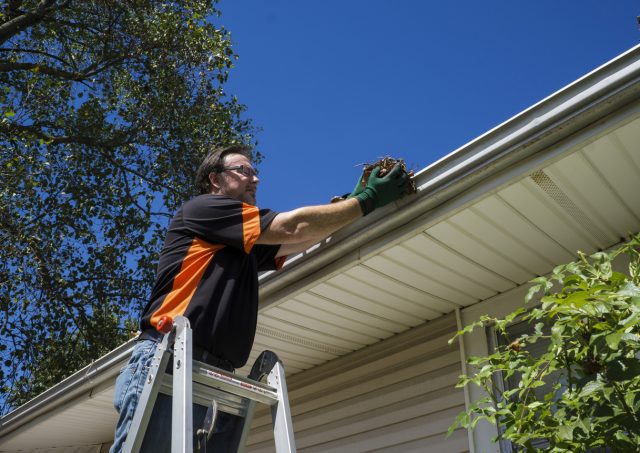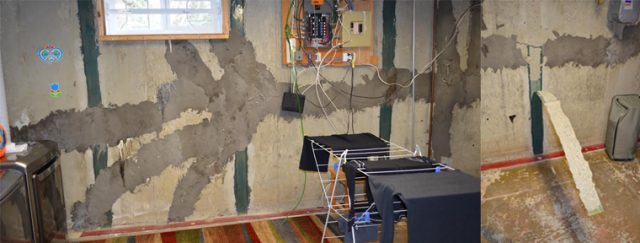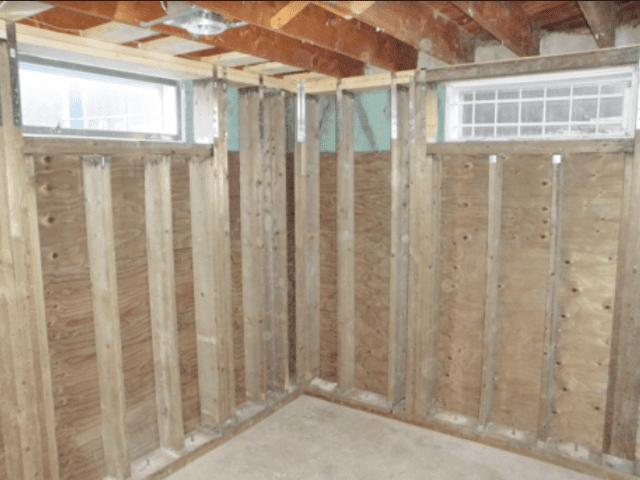Identifying a foundation repair opportunity
What You Need to Know About Foundation Repair Cracks in Your Basement
As homeowners, foundation cracks represent one of the most serious structural problems that often go unnoticed until significant damage occurs. Our team has discovered a comprehensive article that provides essential guidance for identifying cracks in your basement foundation. We have compiled several informative resources about foundation repair cracks and structural damage assessment, along with recommended solutions to address these issues. If you require professional foundation repair assistance, please contact our certified foundation specialists immediately.
For more detailed information, please review these authoritative resources: How to recognize and address problematic foundation cracks & Understanding Basement Cracks & Foundation Shrinkage.
Understanding Foundation Repair Cracks and Structural Impact
- Foundation cracks result from three main causes: soil settlement beneath the foundation, hydrostatic pressure from groundwater, and freeze-thaw cycles in colder climates, leading to potential structural problems that can reduce property values by up to 30%.
- The Concrete Foundations Association recommends expert assessment for cracks exceeding 1/4 inch in width, while foundation repair experts consider 1/8 inch the critical width threshold for immediate professional intervention.
- Homeowners can monitor foundation cracks between professional inspections using industry-standard tape tests, water penetration testing, and moisture meters from manufacturers like General Tools or Protimeter.
- Professional foundation crack assessment kits include seven essential tools: LED inspection lights, precision measuring equipment, crack monitoring gauges, moisture detection systems, calibrated levels, photographic documentation tools, and record-keeping materials.
- Modern foundation repair technologies include epoxy injection systems for hairline cracks, carbon fiber reinforcement strips for structural wall issues, and hydraulic piering solutions for foundation settlement problems in unstable soil conditions.
- Foundation repair costs vary based on repair methodology, with basic epoxy injection treatments starting at $300 for minor cracks, while comprehensive underpinning projects involving multiple steel piers may exceed $30,000 for severe cases.
- Regular foundation maintenance programs, including scheduled professional inspections every 12-18 months and prompt repairs, significantly reduce long-term costs through early intervention and can extend structural lifespan beyond 50 years.
Foundation cracks in residential basements primarily result from three main causes: soil settlement beneath the foundation, hydrostatic pressure from groundwater, and freeze-thaw cycles in colder climates. Leading foundation stabilization companies consistently report these as the primary causes of foundation deterioration. Professional foundation repair contractors evaluate crack severity through a systematic analysis of three critical factors: width measurement, directional orientation, and specific location within the foundation structure. The Concrete Foundations Association, the industry’s primary regulatory body, recommends expert professional assessment for any cracks exceeding 1/4 inch in width. Neglecting foundation cracks frequently leads to serious water infiltration through the concrete barrier, subsequent toxic mold development in interior spaces, and compromised structural integrity of the entire building system. According to established real estate market analysis, these foundation issues potentially reduce property values by up to 30%. For comprehensive foundation damage evaluation, experienced structural engineers and certified foundation specialists should conduct thorough inspections to ensure proper diagnosis and repair strategies.
Common Types of Foundation Cracks and Their Significance
Residential basements commonly experience six distinct categories of foundation cracks, including vertical cracks from normal settling, horizontal cracks from lateral pressure, diagonal cracks from uneven settlement, stair-step cracks in block foundations, and hairline variations from concrete curing. Recent surveys conducted by the American Society of Home Inspectors indicate that approximately 15% of all foundation cracks pose significant structural risks requiring immediate professional attention. A seemingly minor hairline crack can develop into a major structural problem within 180 days without proper treatment, particularly in regions with expansive soil conditions like those found in Texas or Colorado. Foundation repair experts consider 1/8 inch the critical width threshold for immediate professional intervention, though crack location and directional orientation also significantly influence repair urgency and methodology.
Identifying Dangerous Foundation Cracks
Key indicators of potentially hazardous foundation cracks include progressive widening over short time periods, water seepage during or after rainfall, and associated wall displacement or floor irregularities in adjacent areas. Environmental changes significantly impact crack behavior and progression patterns. The National Association of Home Builders has extensively documented seasonal crack width fluctuations of up to 1/16 inch due to temperature variations between summer and winter months. Modern foundation repair monitoring employs sophisticated measurement tools like digital crack gauges and precision calipers from respected manufacturers like Avongard or Vernier for accurate width documentation. Critical environmental factors contributing to foundation crack formation include inadequately designed drainage systems around the perimeter, aggressive tree root growth near foundation walls, and seismic activity in vulnerable regions. Areas near major fault lines experience heightened vulnerability to foundation deterioration and require more frequent monitoring.
Professional Crack Measurement and Monitoring Techniques
The American Concrete Institute, the leading authority on concrete structural standards, establishes that annual crack width increases up to 0.3 millimeters represent normal behavior for non-structural foundation issues. Professional foundation inspection services recommend conducting comprehensive crack measurements biannually, specifically during spring and fall seasons when temperature variations reach their peak and foundation movement is most detectable. Foundation repair specialists utilize advanced measurement technologies during their assessments. These technologies include ultrasonic testing equipment to detect internal fractures, core sampling procedures for concrete strength evaluation, and digital monitoring systems for long-term tracking. Research published by the Portland Cement Association reveals that approximately 70% of foundation cracks maintain stability without intervention over a five-year period. However, local soil composition and regional climate conditions significantly influence this statistical outcome across different geographic areas.
Homeowner’s Guide to Foundation Crack Assessment
Homeowners can implement reliable foundation crack evaluation methods between professional inspections. These methods include the industry-standard tape test for ongoing width monitoring. They also include water penetration testing for detecting active seepage through foundation walls. Professional-grade moisture meters from trusted manufacturers like General Tools or Protimeter provide accurate moisture content readings around foundation cracks, helping identify active water infiltration. Foundation repair safety protocols require appropriate protective equipment when conducting inspections. This equipment includes proper respirators, adequate lighting systems for dark corners, and careful avoidance of potentially contaminated water sources in basement areas. Standard household materials, including specialized digital calipers, transparent crack monitors, and digital documentation systems, enable effective DIY crack monitoring programs between professional assessments.
Essential Home Inspection Equipment and Procedures
A comprehensive professional foundation crack assessment kit includes seven critical tools essential for proper evaluation. These tools include high-intensity LED inspection lights for detailed visual examination, precision measuring equipment for width documentation, crack monitoring gauges for long-term tracking, moisture detection systems for water infiltration assessment, calibrated levels for structural alignment verification, photographic documentation tools for comparative analysis, and detailed record-keeping materials for tracking changes over time. Professional foundation inspection equipment packages typically range from $150 to $250 for homeowner-grade kits. These kits are readily available through major suppliers like Home Depot or Amazon’s professional tool sections. Industry guidelines established by home inspection associations recommend conducting thorough foundation evaluations twice yearly. These evaluations should coincide with major seasonal weather pattern changes in spring and fall. While DIY inspection methods provide valuable ongoing monitoring capabilities between professional visits, research indicates professional foundation assessments remain essential for comprehensive structural evaluation and repair recommendation.
Professional Foundation Repair Solutions
Modern foundation repair technologies have evolved significantly in recent years. They now include specialized epoxy injection systems for hairline cracks that provide waterproofing and structural bonding, advanced carbon fiber reinforcement strips for addressing structural wall issues, and innovative hydraulic piering solutions for foundation settlement problems in unstable soil conditions. Foundation repair costs vary significantly based on the specific repair methodology required for each situation. Basic epoxy injection treatments typically start at $300 for minor cracks, while comprehensive underpinning projects involving multiple steel piers may potentially exceed $30,000 for severe cases. Critical factors influencing repair strategy selection include specific crack characteristics observed during inspection, underlying geological causes of foundation movement, local soil composition and stability, and homeowner budget considerations. Contemporary foundation repair methods also incorporate advanced polyurethane injection systems for void filling and helical pier technologies specifically designed for challenging soil environments with high water tables.
Understanding Foundation Repair Expenses
The professional repair of minor foundation cracks, particularly hairline fissures less than 1/8 inch wide, typically costs between $500 and $1,500 according to comprehensive industry data collected from multiple repair providers. Foundation repair specialists consider twelve key factors when determining precise repair costs for each project. These factors include overall damage severity, specific chosen repair methods appropriate for the situation, and regional labor rates in the local market. Financial advisors specializing in home maintenance recommend allocating up to 10% of total property value for foundation repairs when necessary. This allocation helps maintain both structural integrity and long-term market value of the property. Professional foundation repair services certified by the National Association of Waterproofing and Structural Repair Contractors typically provide extensive transferable warranties ranging from 10 to 25 years, depending on the specific repair methods implemented.
Foundation Damage Prevention Strategies
Effective foundation protection includes implementing proper grading techniques around the perimeter, installing professional-grade drainage systems at critical collection points, and selecting appropriate landscaping solutions that minimize root damage risks near foundation walls. Professional drainage system manufacturers like NDS and Zurn offer specialized engineered solutions specifically designed for protecting foundations from water damage. These systems effectively reduce hydrostatic pressure against foundation walls during heavy rainfall. Regular foundation maintenance programs, including scheduled professional inspections every 12-18 months and prompt repair services when issues are detected, significantly reduce long-term repair costs through early intervention. Advanced construction materials designed specifically for crack resistance in new construction include high-performance concrete formulations with fiber reinforcement, crystalline waterproofing systems that self-seal minor cracks, and reinforced foundation structures developed by industry leaders like BASF and Kryton.
Professional Maintenance Requirements
Industry experts specializing in foundation preservation recommend biannual gutter maintenance to prevent water concentration near foundation walls. They advise additional cleaning requirements in heavily wooded environments where debris accumulation occurs more rapidly. Professional drainage systems must direct collected water at least 5 feet away from foundation walls according to current international building codes and best practice standards. Proper foundation maintenance programs implementing all recommended procedures can extend structural lifespan beyond 50 years under normal conditions. This extended lifespan substantially exceeds standard 30-year mortgage terms by decades. Comprehensive studies conducted by the Foundation Repair Association demonstrate that consistent preventative maintenance prevents approximately 80% of serious foundation problems when implemented correctly.
Important Information about Foundation Repair Cracks
- The average foundation repair crack in a 1,500 square foot home typically costs between $2,000 and $7,000 to repair professionally, depending on severity and repair method required.
- Professional foundation crack repairs usually take between 2 to 5 business days to complete, depending on the severity and type of repair needed.
- Foundation repair cracks commonly expand during winter months due to freeze-thaw cycles and increased soil pressure from water expansion during freezing.
- Most reputable foundation repair companies offer transferable warranties ranging from 10 to 25 years on structural repairs, providing protection for current and future homeowners.
- A foundation repair crack can reduce home value by 10-15% if left unaddressed, according to real estate experts and property appraisal data.
- Professional foundation inspections should be conducted annually, with additional inspections after severe weather events such as floods, droughts, or earthquakes.
- Foundation repair cracks typically expand 1/8 inch per year without proper intervention, with faster progression in areas with expansive clay soils.
- Spring and early summer provide optimal conditions for foundation repairs due to moderate ground moisture levels that facilitate proper curing of repair materials.
- New homes typically develop 2-3 minor foundation repair cracks within the first three years as the structure settles into its final position.
- Approximately 20% of severe foundation crack issues require complete foundation replacement rather than localized repairs, particularly in older structures with multiple failure points.


